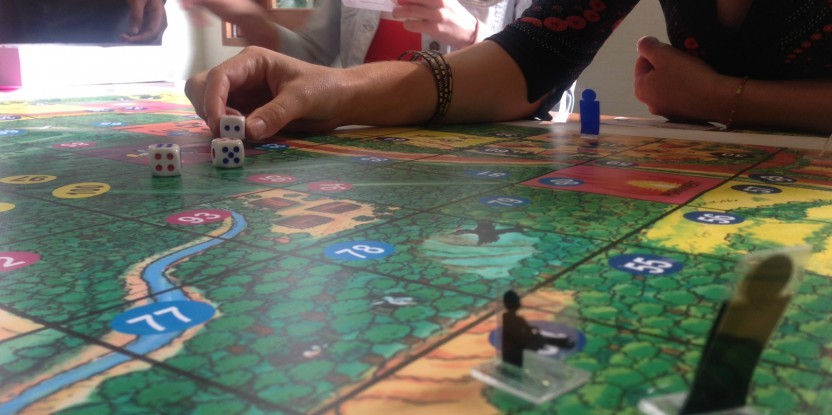
BOGOR, Indonesia (18 October 2013) — Life. Risk. Monopoly. Board games such as these can reflect and diffuse frameworks for thinking about life, war, even land use.
But frameworks change with the times, and a board game recently developed by a scientist with the Center for International Forestry Research (CIFOR) seeks to provide an alternative by helping people to understand and manage contemporary problems related to land use and economics.
The Landscape Game, invented by scientist Herry Purnomo, stands in stark contrast to a more familiar game that encompasses those same themes.
Monopoly is one of the world’s most popular board games, with 275 million copies sold in 43 languages, according to its manufacturer. But the game’s objective — acquire as much land as you can, develop it, and drive your opponents to insolvency through rent-seeking — is by its nature unsustainable.
Monopoly is constructed around a very short-sighted, strictly capitalist view of land management, said Purnomo, whose Landscape Game aims in part to help players understand that it can take many years to get a financial return on property investment.
“Almost a billion people in the world have played Monopoly, but it’s outmoded in the sense that there’s no component considering the impact of property purchases on the ecosystem, global warming or on sustainability,” Purnomo said.
“I wondered what would happen if a billion people were to learn a game that considered an alternative view of investments and landscape management.”
In the Landscape Game, six players represent stakeholders interacting in a landscape comprising different land uses, from dense forest to mixed-use land, including mines and farms. Players can put funds into sustainable investment options related to the UN-backed REDD+ (Reducing Emissions from Deforestation and forest Degradation) program, payments for environmental services (PES), timber logging and planted forests.
The game — which has been played on all five continents by academics, NGO activists, stakeholders from commercial sectors, and rural communities — teaches players to maximize revenues while introducing them to landscape conservation, sustainable development, environmental services, investment alternatives, trade, competition and collaboration. Players who play to benefit those indicators while at the same time taking care of ecological and social conditions are rewarded at the end of the game.
“For policymakers, it can generate ideas about what kind of policy they can implement on a given landscape,” Purnomo said. “The game allows policymakers to play against various land actors and smallholders, so they can see how to implement land-use ideas most effectively.
“There’s no magic formula, but implementing and monitoring a solid landscape management plan is key — it’s an ongoing learning process,” he added.
Purnomo cited Pulau Laut, an island in the Indonesian province of South Kalimantan, as a good example of a successful landscape dynamic. Surrounded by the ocean, Pulau Laut has a clear boundary. All the components of its landscape, such as forest core, forest margin and agricultural mosaic land — as well as such external phenomena as coal mining and population growth — are well managed, Purnomo said.
The Landscape Game explores the synergies and trade-offs between landscape productivity and sustainability like those on Pulau Laut and elsewhere.
Email Herry Purnomo at h.purnomo@cgiar.org to receive your own copy of the game. CIFOR is currently planning a Landscape Game app for iOS and Android smartphones.
For further information on the topics discussed in this blog, please contact Herry Purnomo at h.purnomo@cgiar.org
Some of these topics will be under discussion at the Global Landscapes Forum, November 16 to 17, 2013.
This work forms part of the CGIAR Research Program on Forests, Trees and Agroforestry and is supported by the European Union.
We want you to share Forests News content, which is licensed under Creative Commons Attribution-NonCommercial-ShareAlike 4.0 International (CC BY-NC-SA 4.0). This means you are free to redistribute our material for non-commercial purposes. All we ask is that you give Forests News appropriate credit and link to the original Forests News content, indicate if changes were made, and distribute your contributions under the same Creative Commons license. You must notify Forests News if you repost, reprint or reuse our materials by contacting forestsnews@cifor-icraf.org.